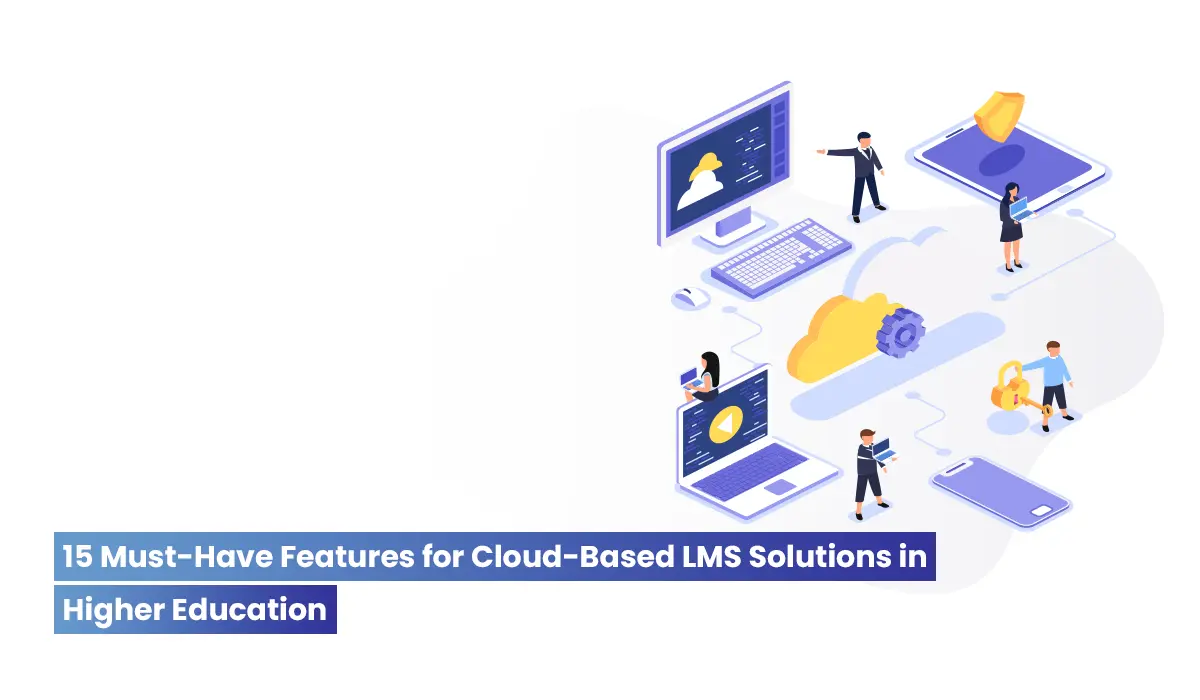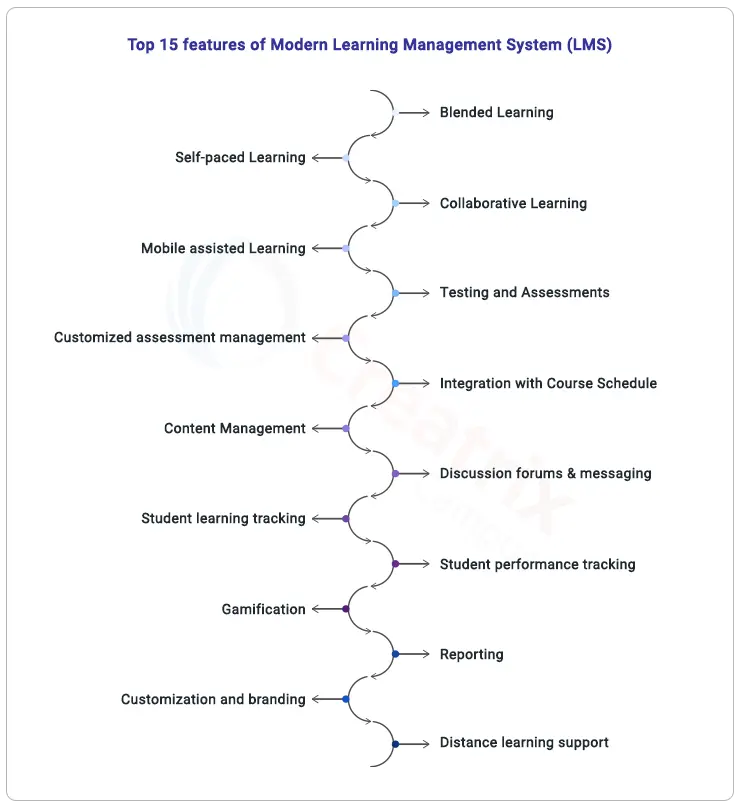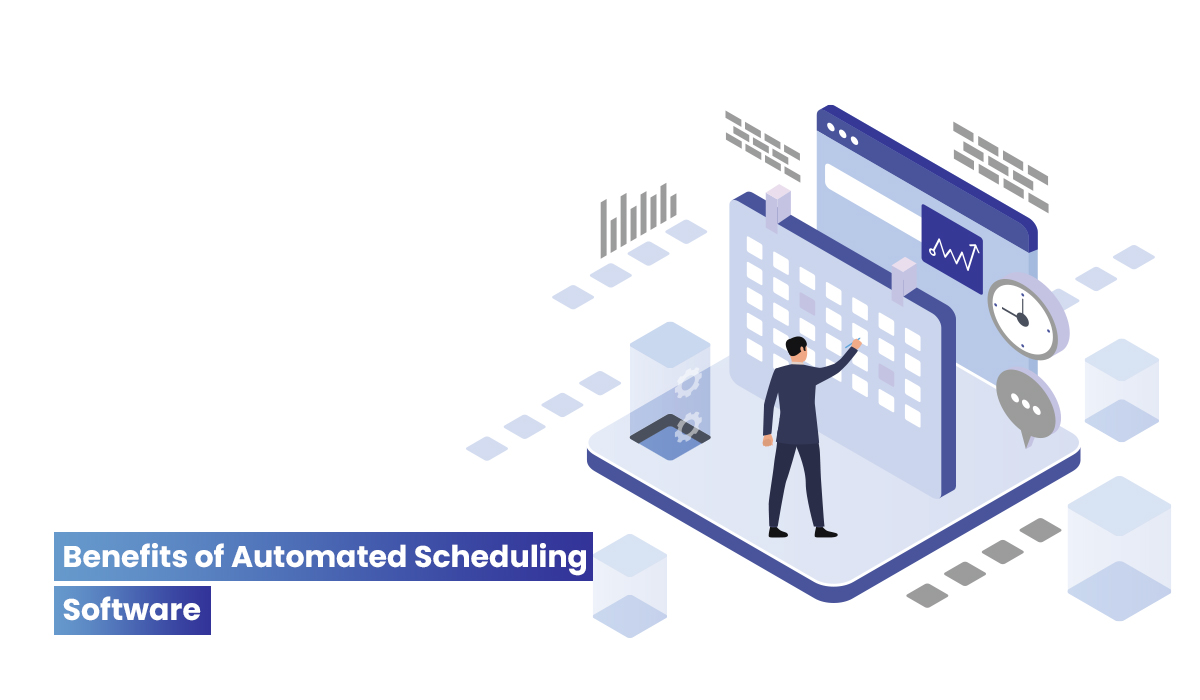The Future of Learning: 15 Must-Have Features for a Cloud-Based LMS in Higher Education

Higher education in 2025 will be about customized, data-driven, flexible learning opportunities rather than only classrooms and textbooks. These days, a cloud-based LMS system is not a luxury; rather, it is a must for universities trying to keep competitive, increase student involvement, and raise results.
But among hundreds of sites available, how do you choose the best one? Supported by statistics and meant to enable institutions to flourish, let us explore the 15 must-have characteristics of a modern customisable LMS for universities.
The 15 Must-Have Features for a Higher Education Learning Management System (LMS) in 2025

1. Support for blended learning
There is nowhere hybrid learning is headed. 73% of students, according to studies, would rather combine in-person and online instruction. To provide an immersive, adaptable experience, your LMS should easily combine digital materials with conventional classrooms.
2. Learning with self- pace
Students pick things up at varying rates. According to the Research Institute of America, a self-paced learning environment allows students to direct their development, therefore enhancing retention between 25 and 60%. Bonus—also Designed in-house tests and checkpoints help pupils stay on target.
3. Tools for collaborative learning
Better still is learning when done jointly. Especially crucial for Gen Z students, 85% of which favor group projects, peer assessments, and shared workspaces, platforms with these features promote involvement.
4. Accessible mobile-friendly
A mobile-optimized LMS is absolutely essential given students spend five to six hours every day on smartphones. Make sure students can access materials, turn in homework, and interact with peers—anywhere, at any moment.
5. Evaluations driven by AI
Why use outdated tasks? Student results are improved by adaptive examinations and performance-based assignments in modern LMSs. Pre-quiz adaptive study increased pass rates by 20%, according to research.
Adjustive learning enhances academic performance in 59% and student engagement in 36%, according to study. Teachers can better identify knowledge gaps and personalize instruction to individual students by using these new technologies.
6. Adaptable evaluations
There is no one-size-fits-all solution here. A strong learning management system should enable you to create customized tests and assignments that highlight each student's unique advantages and disadvantages.
7. Integration of course schedules
Ensure professors and students stay on course. By automatically tracking missed lessons, impending tasks, and class progress, integrated schedules eliminate administrative burdens.
8. More complex content administration
Today’s content can be in many different formats, from YouTube videos to PDFs. There should be a variety of content types supported by your LMS so that teachers can design dynamic, multimedia-rich courses.
9. Messaging boards and discussion notes
In online courses, fifty-eight percent of students say they feel disconnected. Built-in forums and messaging tools help to build community and enable faculty and student real-time cooperation.
10. Student tracking for development
Track engaged and non-involved students in a jiffy! Detailed data on material availability, completion rates, and time spent per module let teachers act early to support difficult students.
11. Performance Studies
Performance goes beyond just marks. Dashboards displaying trends in student progress should be part of a strong LMS, therefore stressing areas needing work and increasing retention rates.
12. Gamification
Engagement leaps when education feels like a game. Leaderboards, badges, and awards on LMS systems help to increase student involvement by up to 89% hence transforming learning from a passive to an active process.
13. Instantaneous reporting
Give up searching frantically for information. Crucially for certification and institutional planning, your LMS should create fast, exportable reports on student performance, course progress, and engagement.
14. Complete branding and customizing
Why then do you look like everyone else? From logos to unique workflows, a top-notch LMS should represent the character of your university thereby guaranteeing a customized experience for staff and students.
15. Distance learning support
With 74% of students saying they would enroll in online programs even post-pandemic, distance learning support is here to stay. Remote classes are something a modern LMS has to support so that students from wherever may get top-notch instruction.
The Impact of Predictive Analytics on Student Engagement
Predictive analytics is changing higher education. According to a 2024 EDUCAUSE research, 76% of predictive analytics-using universities said their student results have improved Using data insights—tracking behavior, engagement, and performance—an LMS helps staff members intervene before students lag behind.

How to Choose the Right LMS for Your Institution
Selecting an LMS goes beyond just filling up boxes. This brief checklist can help you make decisions:
Scalability: Can your institution help it to flourish?
Customizability: Does it fit your particular requirements? Customizing
Integration: Will it flow naturally with your current systems?
Support: Does the provider give consistent, continuous assistance?
Analytics: Can it instantly monitor student involvement and performance?
A cloud-based, customized LMS is about enabling student success rather than only course administration. Your institution can design an interesting, future-ready learning environment with the appropriate features, data insights, and flexibility.
All set to change your college's instruction? Start with a platform meant for future success—that of the students.
Future-Ready Learning Begins with the Correct LMS
Higher education in 2025 is about empowering student success with flexible, data-driven learning opportunities rather than about course management. More than just a platform, the appropriate cloud-based LMS solution transforms engagement, performance, and institutional growth.
Ready to future-proof your university using a customisable LMS for those that satisfy all the necessary requirements? Discover how Creatrix Campus LMS enables organizations like yours to provide smarter, more connected learning—built for tomorrow, now. Connect with us now!


